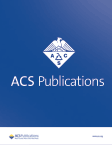室内邻苯二甲酸盐和替代增塑剂的全球视角:发生率和关键迁移参数
IF 2.9
Q2 PUBLIC, ENVIRONMENTAL & OCCUPATIONAL HEALTH
引用次数: 0
摘要
邻苯二甲酸盐和新出现的替代增塑剂因其在室内无处不在以及潜在的不良健康影响而备受关注。然而,有关室内替代增塑剂的发生率和关键迁移参数的总结和分析还不够充分,从而使暴露评估和污染控制工作变得更加复杂。本研究针对这一空白,全面概述了报道最多的增塑剂(包括 10 种邻苯二甲酸酯和 14 种替代增塑剂)的出现情况和关键迁移参数。研究发现,源材料中的增塑剂含量最高可达 27.6 wt%。研究人员利用经验公式预测了源材料的表面邻近气态增塑剂浓度(y0),其数值范围为 0.015 至 64.7 μg/m3。从全球视角出发,从时间和空间两个维度全面分析了塑化剂浓度在来源、气体、颗粒和灰尘各阶段的变化,结果表明各大洲在时间上存在显著差异。对各大洲邻苯二甲酸酯法规的详细调查表明,欧洲较早颁布邻苯二甲酸酯禁令很可能是室内邻苯二甲酸酯浓度下降幅度最大的一个关键因素。此外,在系统地回顾了质量转移和分配理论之后,我们开发了经验公式来预测邻苯二甲酸酯和替代增塑剂的质量转移系数(hm)和分配系数(K)。值得注意的是,增塑剂的 hm 和 K 参数是针对典型的室内界面(包括空气中的颗粒、沉降的灰尘以及不透水和透水材料)进行全面计算的。总之,这项研究加深了人们对室内增塑剂的了解,有助于进行健康风险评估以及开发合适的控制和监测技术。本文章由计算机程序翻译,如有差异,请以英文原文为准。

Global perspectives on indoor phthalates and alternative plasticizers: Occurrence and key transport parameters
Phthalates and emerging alternative plasticizers have garnered significant attention due to their ubiquitous presence indoors and potential adverse health effects. However, the occurrences and key transport parameters of indoor alternative plasticizers have not been sufficiently summarized and analyzed, complicating exposure evaluation and pollution control efforts. This study addresses the gap by providing a comprehensive overview of the occurrence and key transport parameters of the most reported plasticizers, including 10 phthalates and 14 alternative plasticizers. The plasticizer content in source materials was found to range up to 27.6 wt%. An empirical formula was developed to predict the surface-adjacent gaseous plasticizer concentration (y0) of source materials, with values ranging from 0.015 to 64.7 μg/m3. Variations in plasticizer concentrations across source, gas, particle, and dust phases were thoroughly analyzed over both temporal and spatial dimensions from a global perspective, indicating significant differences between continents over time. A detailed investigation of phthalate regulations across continents suggests that the earlier enactment of phthalate bans in Europe is likely a key factor contributing to the most significant decrease in indoor phthalate concentrations. Furthermore, after systematically reviewing mass-transfer and partitioning theories, we developed empirical formulas to predict mass-transfer coefficients (hm) and partition coefficients (K) for both phthalates and alternative plasticizers. Notably, the hm and K parameters of the plasticizers were thoroughly calculated for typical indoor interfaces, including airborne particles, settled dust, and impermeable and permeable materials. Overall, this study advances the understanding of indoor plasticizers, facilitating health-risk assessment and the development of suitable control and monitoring technologies.
求助全文
通过发布文献求助,成功后即可免费获取论文全文。
去求助
来源期刊

ACS Chemical Health & Safety
PUBLIC, ENVIRONMENTAL & OCCUPATIONAL HEALTH-
CiteScore
3.10
自引率
20.00%
发文量
63
期刊介绍:
The Journal of Chemical Health and Safety focuses on news, information, and ideas relating to issues and advances in chemical health and safety. The Journal of Chemical Health and Safety covers up-to-the minute, in-depth views of safety issues ranging from OSHA and EPA regulations to the safe handling of hazardous waste, from the latest innovations in effective chemical hygiene practices to the courts'' most recent rulings on safety-related lawsuits. The Journal of Chemical Health and Safety presents real-world information that health, safety and environmental professionals and others responsible for the safety of their workplaces can put to use right away, identifying potential and developing safety concerns before they do real harm.
 求助内容:
求助内容: 应助结果提醒方式:
应助结果提醒方式:


